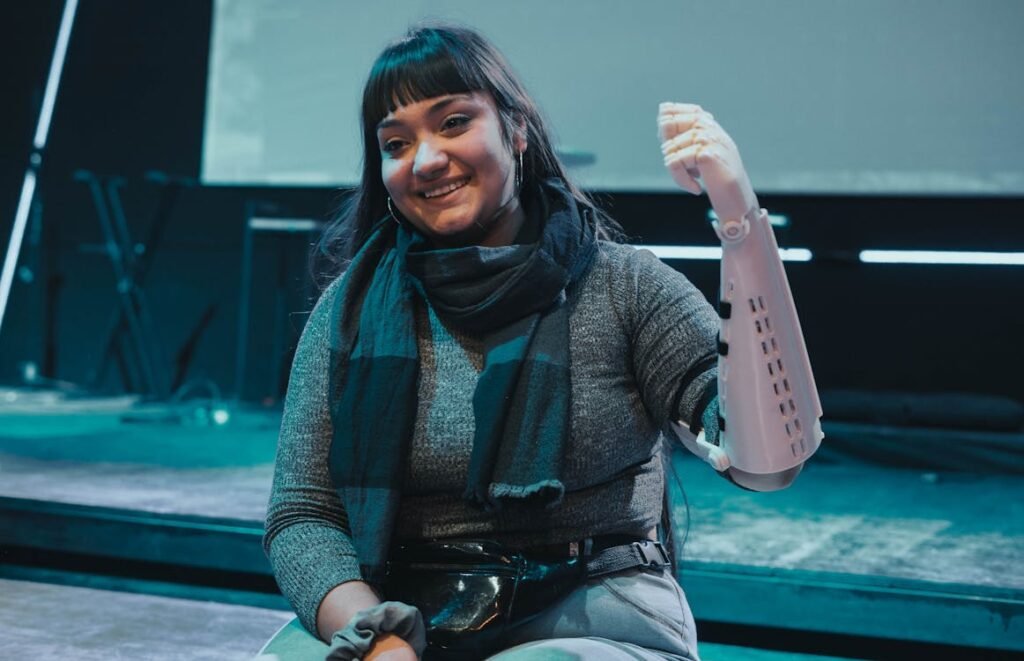When we talk about “dexterity,” we often take it for granted. Typing on a phone, holding a spoon, buttoning a shirt—these tasks happen so quickly and naturally that we barely notice them. But for someone living with limb loss, every one of these movements can be a challenge. That’s where grippy bionic hands come in. They are not just prosthetic devices; they are intelligent, adaptable, and deeply personal tools that bring control and confidence back into daily life.
At Robobionics, we’ve seen firsthand how the power of a firm but flexible grip can change not just how a person moves—but how they live. These bionic hands are not about flashy technology. They’re about functional freedom. They help people feel whole again by letting them do the ordinary things that make life feel normal.
What makes them “grippy” is their ability to adjust to different objects—thick or thin, hard or soft—without requiring the user to manually switch modes or think too hard. It’s this adaptability that redefines dexterity. Because true dexterity isn’t just about movement—it’s about confidence in motion.
Let’s explore how this technology works, why it’s different, and how it’s creating a new standard for prosthetics—not just globally, but right here in India.

How Grippy Bionic Hands Work: The Science Beneath the Skin
Understanding Myoelectric Signals and Smart Sensors
Grippy bionic hands operate on a simple principle: when you think about moving your hand, your muscles fire off electrical signals. Even if the hand is gone, those signals remain in the residual limb. These tiny signals—called myoelectric impulses—are picked up by sensors placed inside the bionic arm.
These sensors are incredibly precise. They don’t just read that you want to move—they read how. They measure the strength, speed, and timing of your muscle contraction, and translate that into instructions for the hand to open, close, twist, or grip.
At the heart of every Robobionics bionic hand is a smart microprocessor. This processor doesn’t just follow commands—it makes decisions.
Based on the object being touched, it adjusts grip strength. Holding a plastic cup? The grip will be light. Lifting a bag of rice? It tightens just enough. This automated adjustment is what makes the grip so “grippy.”
What surprises many users is how fast this process is. You don’t need to press buttons or scroll through modes. Just think. Move your muscles. The hand reacts—almost instantly.
Adaptive Grip: Holding on Without Holding Back
The beauty of these hands lies in their ability to adapt. You don’t need to tell the hand what it’s holding. It figures it out. The shape, weight, and texture of an object influence how the fingers respond.
This means you can pick up something delicate one moment, and something heavy the next—with no changes to your settings.
This adaptability makes everyday life feel effortless again. From holding a pen to using a fork, from turning a doorknob to picking up your phone—these tasks feel smooth. Over time, the bionic hand becomes an extension of your body, not just a tool.
In India, where many daily activities involve varied hand movements—eating with fingers, performing prayers, driving bikes—this kind of responsive grip is more than helpful. It’s life-changing.
Battery, Build, and Indian Durability
Robobionics designs every grippy bionic hand with Indian users in mind. We build them for hot weather, for long days without recharging, for dusty environments, and for real-world use.
Our devices run for an entire day on a single charge. They are made from lightweight but strong materials that resist rust, heat, and sweat.
And we make sure the design suits your lifestyle. Whether you’re a student, a professional, a homemaker, or a farmer, the grip adapts to you—not the other way around.
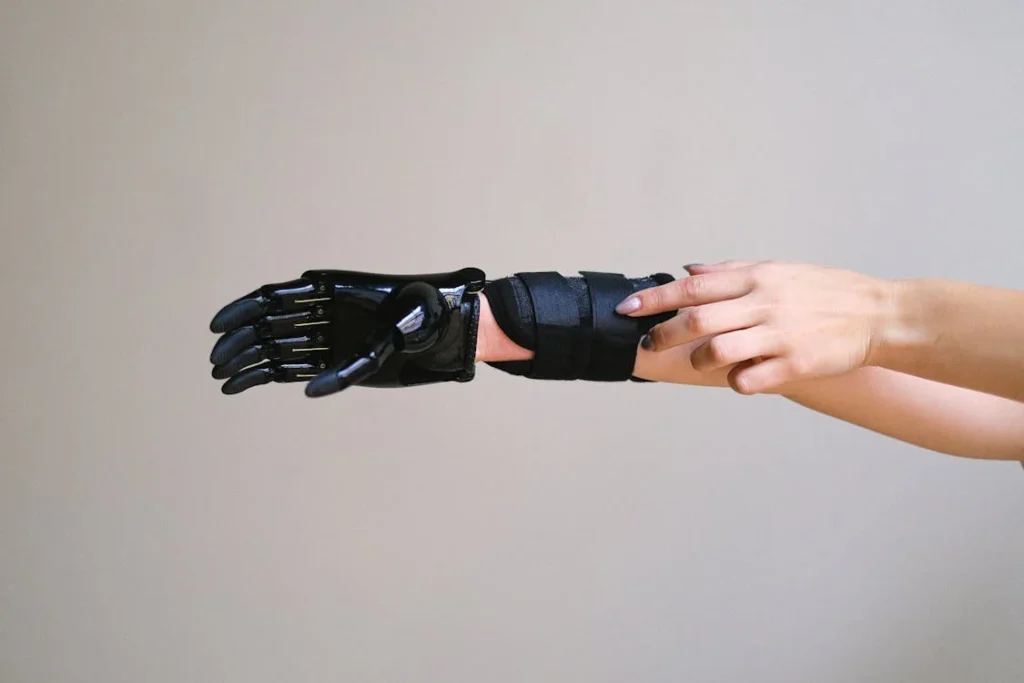
Dexterity Reimagined: What It Means to Hold, Feel, and Act Naturally
True Dexterity Starts With Confidence
Dexterity isn’t just about moving fingers. It’s about trust. Can I trust my hand to hold this? Will it drop it? Will it be strong enough—or too strong? Before grippy bionic hands, amputees often had to overthink every move. Will my prosthetic grip this pencil too tight and snap it? Will I spill water trying to drink from a glass?
With adaptive grip, that worry starts to fade. You begin to trust your hand again. And that trust brings confidence. You stop planning every movement. You start living more spontaneously.
We’ve seen users laugh after holding their child’s hand for the first time in years. We’ve seen them wipe tears, fold clothes, sip chai without spilling—and do it all with grace. That’s what real dexterity looks like. It’s not flashy. It’s smooth, seamless, and unspoken.
The Return of Fine Motor Skills
Fine motor skills—like buttoning a shirt, writing, or using chopsticks—require a delicate balance between strength and control. This is where traditional prosthetics fall short. They either grip too tightly, too loosely, or not at all.
Grippy bionic hands can mimic the complex tension patterns of natural hands. Each finger can move independently. The thumb can rotate. The wrist can pivot. This allows for dozens of grip styles that mirror real human movement.
But it’s not just about mechanics. It’s about feeling natural. After a few weeks of use, most users don’t have to “think” about how to move. Their muscles remember. Their brain adjusts. And suddenly, the hand is not just attached to them—it’s part of them.
Functional Dexterity for the Indian Way of Life
What makes India unique is our rich culture of hand use. From serving food without utensils to handling prayer items, from farming to weaving, our hands are busy, diverse, and incredibly expressive. Robobionics designs bionic hands that respect and respond to this culture.
We test our hands for holding a stainless-steel plate, gripping temple lamps, handling fruits and vegetables, opening pressure cookers—these are things global prosthetic makers don’t always consider. But we do. Because dexterity, in the Indian context, must include all these elements.
For instance, many users have told us how relieved they were to be able to eat with their hand again. Not with a spoon—but the way they always used to. That level of freedom restores not just function, but identity.
Gripping for Real Life: The Everyday Wins That Matter Most
When the Ordinary Becomes Extraordinary
People often think breakthroughs happen on big stages—with headlines, cameras, and applause. But in the world of grippy bionic hands, the real miracles happen quietly. They happen in kitchens, in classrooms, on buses, at office desks, and in tiny moments that nobody else sees. A man tying his shoelaces after five years. A teenager flipping through a book without help. A mother peeling vegetables again.
These are the moments where dexterity shines. It’s not about robotic elegance. It’s about fluid, natural movement that allows you to live like yourself again.
When users begin using their grippy bionic hand, they usually start small. They hold a cup, flip a switch, tap on their phone. These early wins feel big because they are. They represent independence—reclaimed, piece by piece. As confidence builds, so do ambitions. That’s where true transformation begins.
We’ve had users who started off struggling to open a water bottle, and now ride motorbikes, use tools, and even teach dance. The joy is not in what the technology does—it’s in what the person can now do with it.
Building Habits Through Movement
The more a person uses their bionic hand, the more natural it becomes. Dexterity doesn’t appear all at once. It’s learned, through use. Over weeks and months, users develop new habits and routines. They no longer second-guess themselves. They start cooking again. They reach out to hug loved ones without hesitation.
At Robobionics, we guide each user through this journey. We know that just giving someone a hand isn’t enough. You have to walk with them as they relearn how to live with it. That means ongoing training, motivation, and support.
What starts with a grip becomes a habit. What becomes a habit becomes second nature.
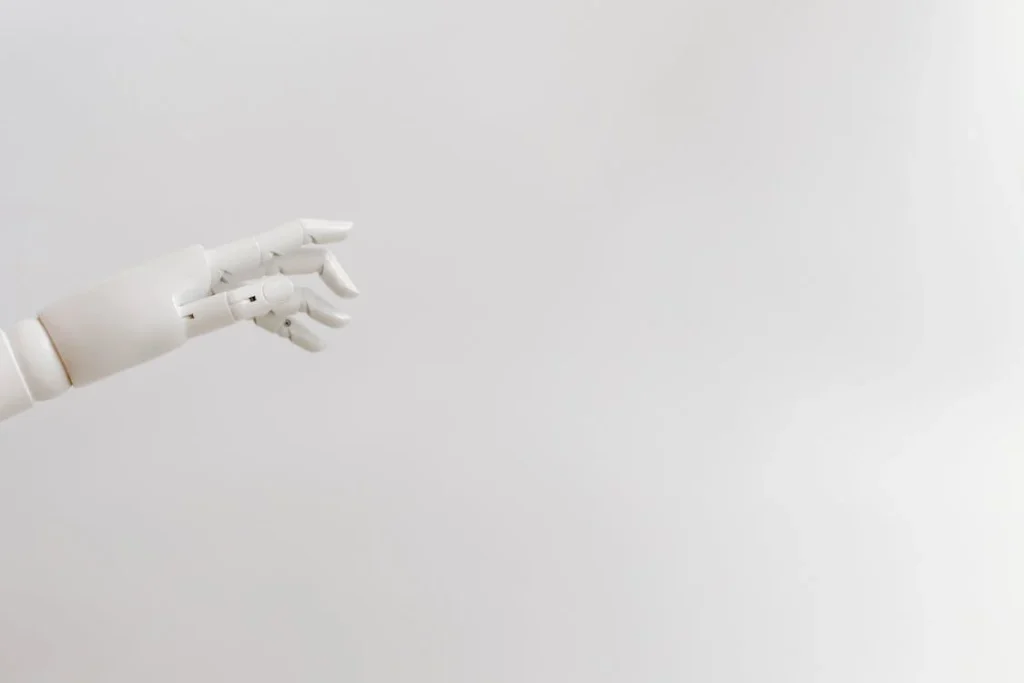
The Emotional Side of Dexterity: Healing Beyond the Physical
Confidence Is a Physical Experience
It’s easy to think of bionic hands as mechanical tools—but they trigger powerful emotional changes. We’ve seen users cry during fittings—not because they were in pain, but because they could suddenly hold a fork again. Because they could finally look in the mirror and see a version of themselves that wasn’t broken or dependent.
Grippy bionic hands restore more than movement. They restore identity. When people regain fine motor control, they also regain the ability to take care of themselves—grooming, dressing, expressing themselves through gestures and touch. These aren’t small wins. They’re life-giving.
Confidence doesn’t come from big achievements. It comes from doing everyday things without asking for help. Dexterity means doing, without doubting. And that feeling spreads—to how you walk, how you talk, and how you show up in the world.
Ending the Cycle of Embarrassment and Avoidance
Before they receive a functional prosthetic, many amputees develop coping mechanisms that isolate them. They avoid shaking hands, opening doors, or eating in public. They hide their limb. They avoid eye contact. And all of this comes from one deep fear—that someone will stare, or judge, or pity them.
But when someone has a bionic hand that moves like their own, that fear begins to fade. They begin to participate again. They extend their arm for a handshake instead of hiding it. They reach across a table without hesitation. They go from observer to participant.
This emotional shift is subtle, but profound. It doesn’t come from therapy. It comes from real, tangible action—powered by dexterity.
The Technology Behind the Touch: Inside Robobionics’ Innovation
Mechanical Precision Meets Biological Intelligence
Every grippy bionic hand from Robobionics is designed with a balance of strength, sensitivity, and speed. It’s not about being the strongest or fastest. It’s about feeling natural.
We work closely with biomedical engineers, neurophysiologists, and real users to fine-tune every element—from how quickly the fingers respond, to how softly they can close around delicate objects like paper or cloth. We program multiple grip types and hand gestures into our hands, but we don’t overload users. Everything is designed for simplicity.
Our hands come equipped with independent finger actuation, which allows the hand to naturally wrap around curved surfaces. This mimics the human hand’s ability to conform to objects, rather than just pinching or clamping.
We also build in features like passive compliance, which lets the fingers “give” slightly when pressure is applied. This makes the grip safer and more responsive—just like a real hand would do when it touches something fragile or soft.
Made for India: Engineered for Local Lives
We don’t just design for labs—we design for real people in India. That means devices that can handle the Indian summer, dusty roads, and long power cuts. Our bionic hands come with durable outer shells, sweat-resistant coatings, and battery systems optimized for long use.
We’ve also developed a unique sensor calibration protocol tailored to Indian skin types and muscle tone patterns. This allows for more reliable signal detection, even in high humidity or heat.
From urban professionals in Hyderabad to rural school teachers in Bihar, we’ve deployed grippy bionic hands that meet real people where they are—not where the textbook says they should be.
Our support doesn’t stop after delivery. We offer multilingual app support, video call-based tutorials, and service partnerships across the country. Because great tech is only great when it stays great—every day.
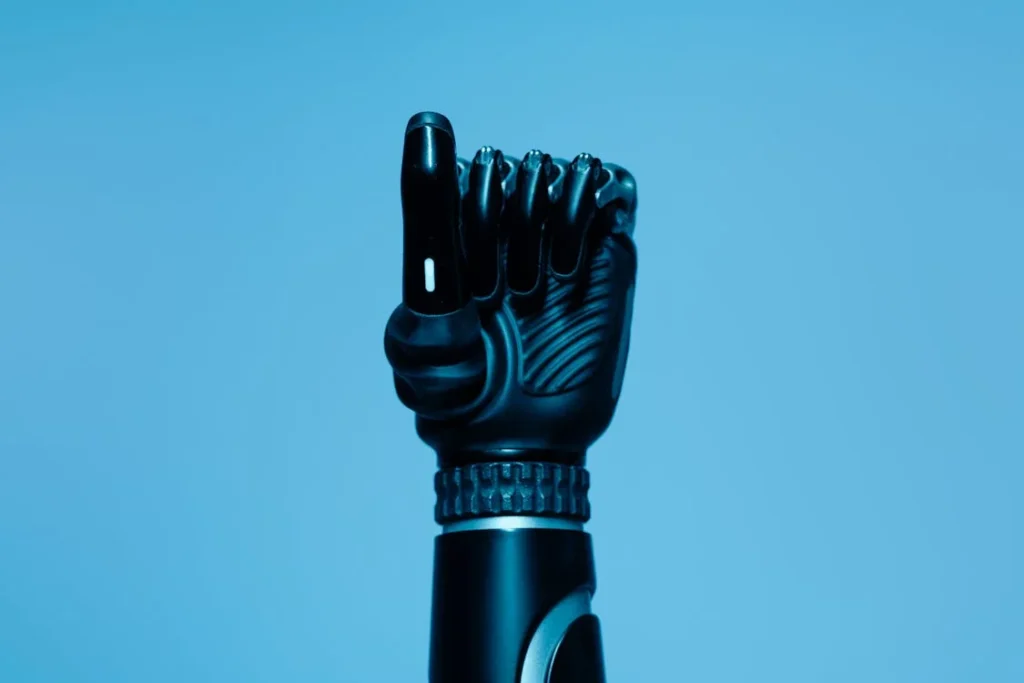
What the Future Holds: Smarter, Lighter, More Intuitive Hands
AI-Powered Dexterity: Learning from Every Movement
The future of grippy bionic hands isn’t just about better materials or faster motors—it’s about learning. Artificial Intelligence is beginning to play a role in how these devices work. At Robobionics, we’re already developing systems that can recognize a user’s movement patterns over time and begin to predict their intent.
This means the hand can learn from you. If you often pick up a cup from a certain angle or hold a pen in a specific way, the system starts to anticipate that grip. Over time, it can even shorten the response time because it “knows” what you’re trying to do.
Machine learning allows us to improve control without requiring more effort from the user. It’s like having a hand that gets smarter the more you use it. For people who use their prosthetic for hours every day, this kind of learning could shave off seconds from every movement—which adds up to minutes and hours of saved effort.
We’re also experimenting with adaptive feedback loops that tell the hand how much force it applied during a grip. This “sense of touch” doesn’t replicate human feeling exactly, but it gives the user important information through small vibrations or mechanical resistance.
Imagine knowing whether you’re squeezing too hard or too softly—without having to look. That’s what sensory feedback can bring. And with AI, that feedback can become more refined over time.
Better Materials, Seamless Integration
The next generation of grippy hands will be lighter and more breathable. We’re working on advanced polymers and composites that are not only strong and durable but also flexible enough to allow better motion at the wrist and fingers.
We also envision a more seamless interface with the body—fewer wires, fewer charging ports, and more embedded systems that sit comfortably under clothing. We’re moving toward a future where the bionic hand doesn’t just look good—it feels invisible. Like it’s truly part of your body.
Battery technology is also improving. Soon, we may see hands that run on solar-charged wearable batteries or kinetic energy harvested from walking. That’s the dream: a hand that powers itself just by being part of your daily life.
We’re also improving waterproofing. Many users tell us they want to wash dishes, play with their kids near water, or just walk in the rain without worry. We hear you. And we’re building for that.
Open Ecosystems and User-Driven Innovation
At Robobionics, we believe the future is collaborative. We’re developing an open ecosystem where users can connect their prosthetic to their phones, tablets, and even other smart devices. Want to change grip mode using your phone? Done. Want to track how often you use certain movements so you can practice better? That’s coming too.
We’ve even had users suggest features that we hadn’t thought of—like using hand gestures to control lights, unlock doors, or send commands to a smart assistant. As smart homes and smart wearables grow, so will the potential of bionic limbs.
We’re also working on modular upgrades—so users don’t have to replace the whole hand when new features are released. You can swap out a sensor, upgrade the processor, or get a new motorized finger. Just like you upgrade your phone, you can upgrade your grip.
What makes this all possible is user feedback. Every hand we build teaches us something new. Every user we meet brings us closer to the next innovation.
The Social Dimension of Grip: Rebuilding Relationships and Roles
Touch as a Language of Connection
When we think of touch, we often think of sensation. But touch is more than that—it’s a way of speaking. A handshake can signal respect. A gentle pat can comfort. Holding someone’s hand can say what words can’t. For amputees, losing the ability to touch others with ease often means losing an important part of how they connect with the world.
Grippy bionic hands give some of that connection back. And not just because they can grip an object. It’s because they can grip it with intention—with control, with nuance, and without fear of squeezing too hard or letting go too early.
The first time a user reaches out to hold a loved one’s hand again, there’s often silence. But it’s a full silence. One that’s filled with relief and recognition. That kind of moment is about more than motion—it’s about human dignity.
For children, especially, this type of connection is critical. We’ve had parents at Robobionics tell us that before getting their prosthetic, they hesitated to hold their kids, afraid they might drop them or fail to support them properly. With a reliable grip that adjusts naturally, those doubts fade. Parents become parents again—not just caretakers needing help themselves.
Shifting Family Dynamics Through Capability
The role of amputees in a family often shifts dramatically after limb loss. Someone who used to be the provider may become dependent. A once-active homemaker may now watch others do the chores they loved. These changes create not only frustration but a quiet sadness—a sense that something valuable has been taken away.
Restoring dexterity means restoring these roles. When a father can carry bags again or help his child get dressed, when a mother can cook her family’s favorite meal, when a grandparent can again perform religious rituals with grace—these things matter. They bring harmony back into daily life.
What many people forget is that regaining function also relieves emotional pressure on others in the household. Family members no longer have to constantly assist. The atmosphere shifts from caretaking to collaboration. That changes the tone of conversations, relationships, and even the household rhythm.
In rural communities, this shift can be especially powerful. Many families rely on each member contributing to shared work. A prosthetic that allows someone to carry buckets, manage farm tools, or climb stairs independently has an impact far beyond the individual—it affects the entire group’s quality of life.

Dexterity in the Workplace: From Disability to Opportunity
Adapting to Professional Environments
Workplaces aren’t always designed with amputees in mind. Office chairs, computer keyboards, door handles, machinery controls—all of these require dexterity. When someone loses a hand, the fear isn’t just about the physical loss. It’s about employability. Will I still be able to do my job? Will people take me seriously?
Grippy bionic hands answer that fear with action. Not only do they restore the ability to work—they often empower users to perform in new, more efficient ways. We’ve had clients who type faster, write more clearly, and handle repetitive tasks with less fatigue than before.
Professionals in finance, law, hospitality, and even creative fields like art and design are now using bionic hands that let them express their talents freely. The hands can be programmed for various grip patterns tailored to specific workflows. And because the grip can be adjusted with subtle muscle contractions, users can learn to multitask smoothly—something rarely possible with older prosthetics.
Employers, too, are noticing. Where there was once hesitation to hire someone with an amputation, there is now curiosity. When a bionic hand enters the workplace, it often opens conversations—about innovation, inclusion, and ability.
And here’s something we see often: when one employee receives a bionic hand and thrives, it encourages others with disabilities to speak up. It creates a ripple of possibility.
Returning to Manual Trades and Skilled Labor
One of the great myths about prosthetics is that they only work in office jobs. At Robobionics, we’ve seen the opposite. We’ve worked with welders, carpenters, electricians, and mechanics—people whose trades depend heavily on hand skills. They didn’t want sympathy. They wanted tools.
Our grippy hands are designed to serve that need. With rugged materials and adaptive grip, users can hold screwdrivers, saw handles, and even hammer grips. Some of our models are fine-tuned for vibration resistance and shock absorption so that handling power tools doesn’t damage the device—or the user’s residual limb.
We also support field retraining. If someone wants to return to work but needs to relearn certain motions with the prosthetic, we provide practice modules and task-specific drills. In some cases, we’ve even created custom attachments for tools specific to a person’s trade.
For these workers, dexterity isn’t just personal. It’s economic. It’s the difference between a job and unemployment. Between pride and dependency. And we take that responsibility seriously.
Training the Brain and Body: Neuroplasticity and Adaptation
Muscle Memory, Rewired
Our brains are remarkably adaptive. Even after a limb is lost, the part of the brain that controlled that hand doesn’t just disappear. It waits. This is where grippy bionic hands step in—not just to fill a physical gap, but to reactivate mental pathways.
When someone begins using a bionic hand, they begin sending signals from their brain to their limb again. At first, these signals may be weak or imprecise. But with repetition, the brain re-learns how to fire the correct pattern. Over time, muscle memory builds, and movements feel more fluid.
This process—called neuroplasticity—is the secret to long-term dexterity. The more someone uses their hand, the smarter their body becomes at using it. This is why early and consistent training is critical. And it’s also why no two journeys are the same.
Some users develop full confidence in weeks. Others take months. But the key is repetition and trust. Our devices are built to make this repetition easy. We minimize fatigue, streamline control logic, and provide practice tools that simulate daily tasks.
And here’s the beautiful part: as the body gets better, the prosthetic doesn’t just stay the same—it responds. Sensors become more precise. Motors adjust automatically. The system and the user evolve together.
Phantom Limb Sensations and Psychological Relief
One surprising side effect of prosthetic use is a reduction in phantom limb pain. Many amputees experience phantom sensations—sometimes painful, sometimes confusing. The brain still thinks the hand is there and sends signals accordingly.
When a bionic hand is introduced and starts responding to those signals, the brain receives feedback that makes sense. This reduces the mismatch between intent and outcome—and often reduces phantom limb symptoms.
Some users describe this as a kind of psychological closure. For the first time, their brain “sees” the hand moving again. It’s a powerful moment that blends the emotional and the neurological.
That’s what dexterity really is—it’s the reunion of thought and action. Of intention and response. Of mind and body.
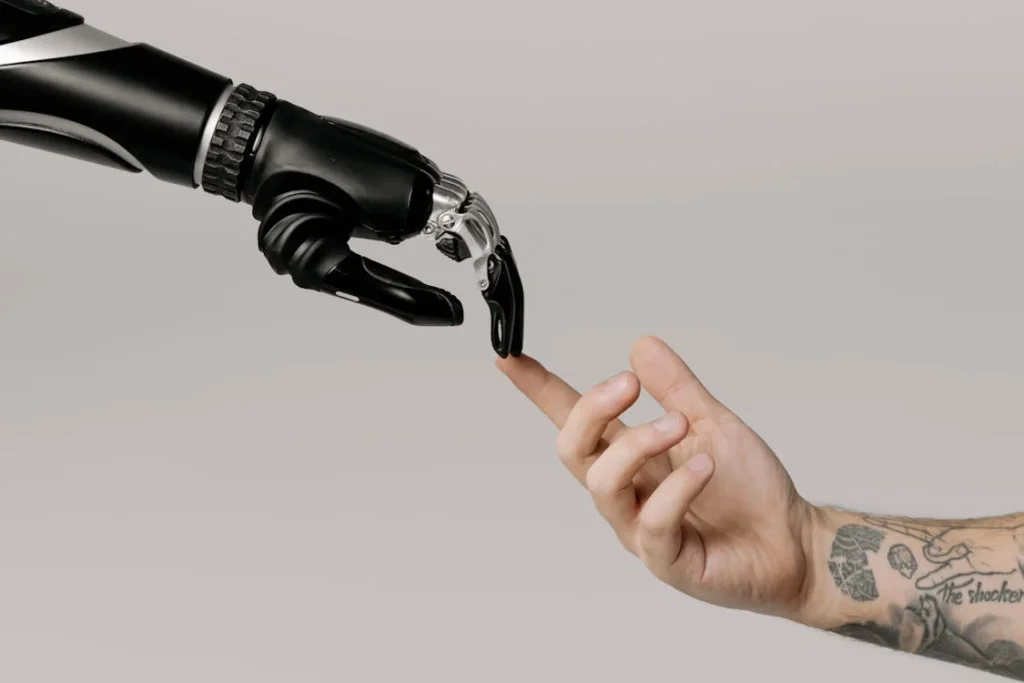
Dexterity for the Next Generation: Empowering Young Amputees
The Importance of Early Introduction
Children who experience limb loss—whether due to birth conditions or trauma—have an extraordinary ability to adapt. Their brains are still forming, which makes them ideal candidates for early bionic hand use. But more than biology, it’s about giving them a fair start.
Imagine a child being able to attend school, write in notebooks, carry lunchboxes, and play with friends without feeling “different.” That’s what grippy bionic hands can make possible.
At Robobionics, we’ve created child-friendly versions of our prosthetics. These are lighter, easier to fit, and designed for growth. We make sure the design is fun—allowing kids to choose colors, themes, or superhero-style exteriors. Because for them, the bionic hand isn’t just a tool—it’s part of who they are becoming.
Academic and Social Inclusion
When kids feel excluded, their learning suffers. When they feel capable, they thrive. By restoring fine motor control, we allow children to write, draw, use scissors, and participate fully in class activities.
We also work with schools to train teachers, so they understand how to support prosthetic users without singling them out. It’s not about giving special treatment—it’s about giving fair access.
And outside the classroom, these hands help kids play. Yes, play. Because running, climbing, holding sports equipment, and just being silly with friends is essential to childhood. We want kids to see their bionic hand as something empowering—not something to hide.
For teens, especially, who are already navigating identity and self-image, having a grippy, stylish, responsive bionic hand can shift how they see themselves. It becomes a statement. Not of limitation—but of strength.
Conclusion
Dexterity isn’t just about how you move—it’s about how you live. And grippy bionic hands are rewriting what’s possible for people living with limb loss. They’re not just holding objects. They’re holding on to dreams, relationships, and dignity. They’re picking up where life left off.
In a world that often talks about high-tech innovation in terms of gadgets, processors, and speed, we want to shift the conversation. At Robobionics, we believe that the most powerful technology is the one that empowers people quietly, personally, and completely. That’s what grippy bionic hands are doing, one moment at a time.
They restore the ability to do little things—turn a key, flip a page, hold a loved one’s hand—and through these little things, they restore the big picture. Identity. Confidence. Autonomy.
For the user, it’s not about wearing a piece of tech. It’s about living again. Fully. Freely. Without fear.
So, when we say grippy bionic hands are redefining dexterity for amputees, we’re not just talking about stronger grips or smoother movements. We’re talking about rewriting the story—where the end of a limb doesn’t mean the end of capability.
In fact, for many, it’s the beginning of something far more powerful.



